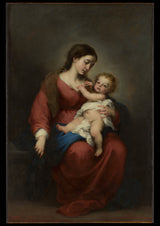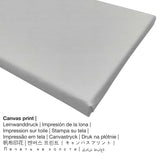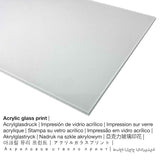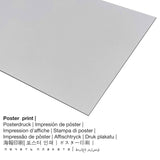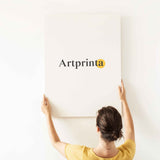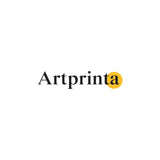Bartolomé Estebán Murillo, 1670 - Nwa agbọghọ na-amaghị nwoke na nwa - mbipụta nka mara mma
Ụtụ gụnyere. Mbupu gbakọrọ na ndenye ọpụpụ.
Ozi nka ndị ọzọ nke The Metropolitan Museum of Art (© - Ụlọ ihe ngosi nka nke obodo ukwu - Museumlọ ihe ngosi nka nke Obodo)
Like Zurbarán and Velázquez, Murillo was trained in Seville, where he spent his whole career. Often referred to as the "Santiago Madonna," this painting once belonged to the Marqués de Santiago, whose collection contained many outstanding works by the artist. The popularity of Murillo’s paintings of the Virgin and Child derives from his ability to endow a timeworn theme with a quality of intimacy and sweetness. In this picture, the infant’s attention has been momentarily diverted from nursing by the presence of the viewer.
Ozi ahaziri na nka
| Aha ọrụ nka: | "Vergin na Nwa" |
| nhazi ọkwa: | sere |
| Okwu mkpokọta: | nka ochie |
| Narị afọ nka: | 17th narị afọ |
| Afọ okike: | 1670 |
| Afọ nka: | karịa afọ 350 |
| Agba na: | mmanụ na kwaaji |
| Nha izizi (ọrụ nka): | 65 1/4 x 43 inch (165,7 x 109,2 cm) |
| Ụlọ ihe ngosi nka / ebe: | Museumlọ ihe ngosi nka nke Obodo |
| Ebe ngosi nka: | New York City, New York, Njikota Obodo Amerika |
| Weebụsaịtị ihe ngosi nka: | www.metmuseum.org |
| Ikikere nke ihe osise: | ngalaba ọha |
| Site n'aka: | Ụlọ ihe ngosi nka nke Metropolitan, New York, Rogers Fund, 1943 |
| kreditline ọrụ nka: | Rogers Fund, 1943 |
Ose okwu
| Ihe nkiri: | Bartolomé Estebán Murillo |
| okike nke onye nka: | nwoke |
| Obodo onye nka: | spanish |
| Ọrụ onye na-ese ihe: | onye na-ese ihe |
| Obodo onye nka: | Spain |
| Nkewa onye nka: | nna ukwu ochie |
| Nwụrụ na afọ nke: | 65 afọ |
| Afọ ọmụmụ: | 1617 |
| Nwụrụ n'afọ: | 1682 |
Banyere ihe
| Ụdị edemede: | ezi nka mmeputakwa |
| Usoro mmeputakwa: | dijitalụ mmeputakwa |
| Production usoro: | mbipụta dijitalụ |
| Mmalite ngwaahịa: | Germany |
| Ụdị ngwaahịa: | na mmepụta ihe |
| Ojiji ngwaahịa: | nka mgbidi, ime ụlọ |
| Nhazi nka nka: | nhazi ihe osise |
| Oke akụkụ: | 1: 1.4 (ogologo: obosara) |
| Nsonaazụ: | ogologo bụ 29% mkpụmkpụ karịa obosara |
| Akwa ngwaahịa dị: | akwụkwọ mmado (akwụkwọ kwaaji), mbipụta enyo acrylic (nke nwere ezigbo mkpuchi iko), mbipụta ọla (aluminium dibond), mbipụta kwaaji |
| Mbipụta kanvas (akwa akwa na etiti ihe ndọtị): | 50x70cm - 20x28", 100x140cm - 39x55" |
| Mbipụta iko acrylic (nwere ezigbo mkpuchi iko) nhọrọ nha: | 50x70cm - 20x28", 100x140cm - 39x55" |
| Mpempe akwụkwọ mmado (akwụkwọ kwaaji) nha: | 50x70cm - 20x28" |
| Nhọrọ nha nha nke aluminom dibond (ihe aluminom): | 50x70cm - 20x28", 100x140cm - 39x55" |
| Igwe onyonyo: | agunyeghi |
Họrọ ngwa ngwaahịa ịchọrọ
Nchịkọta nhọrọ ngwaahịa na-enye gị ohere ịhọrọ ngwa na nha nke gị. Nhọrọ ndị a dị maka n'otu n'otu:
- Poster (akwa akwa akwa): Our poster print is a UV printed canvas with a fine surface structure. Please note, that depending on the absolute size of the poster print we add a white margin of something between 2-6cm around the painting, which facilitates the framing.
- Mbipụta nke aluminom: Aluminium Dibond prints are prints on metal with a true depth. A non-reflective surface structure creates a fashionable look. The Direct Print on Aluminum Dibond is the excellent introduction to the sophisticated world of reproductions on aluminum.
- Mbipụta kwaaji: A printed canvas, not to be confused with an artwork painted on a canvas, is a digital copy printed on a cotton canvas. It creates a sculptural look of three-dimensionality. Canvas Prints have the advantage of being low in weight. This means, it is easy and straightforward to hang the Canvas print without the support of any wall-mounts. That is why, canvas prints are suited for any type of wall.
- Ugogbe acrylic ebipụtara: The acrylic glass print, often referred to as a UV print on plexiglass, transforms the original work of art into beautiful home décor. The work of art is manufactured with the help of state-of-the-art UV direct printing technology. This creates impressive, vivid color hues. The major benefit of an acrylic glass fine art print is that contrasts and granular color details become identifiable because of the precise gradation.
Banyere ihe
N’afọ 1670 na spanish onye na-ese ihe Bartolomé Estebán Murillo created the piece of art. The version of the painting has the following size: 65 1/4 x 43 inch (165,7 x 109,2 cm). Mmanụ na kwaaji was applied by the European painter as the medium of the work of art. Moveover, the artpiece is part of the digital collection of The Metropolitan Museum of Art, which is one of the world's largest and finest art museums, which includes more than two million works of art spanning five thousand years of world culture, from prehistory to the present and from every part of the globe.. With courtesy of: Ụlọ ihe ngosi nka nke Metropolitan, New York, Rogers Fund, 1943 (ikike ngalaba ọha). Creditline of the artwork: Rogers Fund, 1943. On top of that, alignment is in Eserese format ma nwee oke nke 1: 1.4, nke pụtara na ogologo 29% dị mkpụmkpụ karịa obosara.
Disclaimer: We try everythig possible in order to depict the products as accurate as possible and to exhibit them visually in our shop. At the same time, the pigments of the printed materials, as well as the print result can vary slightly from the representation on the screen. Depending on the screen settings and the quality of the surface, color pigments can unfortunately not be printed one hundret percent realistically. Since all the fine art prints are printed and processed manually, there may as well be minor differences in the motif's exact position and the size.
Ederede a bụ ikike ọgụgụ isi ma chekwaa ya site na nwebisiinka ©, Artprinta.com (Artprinta)

